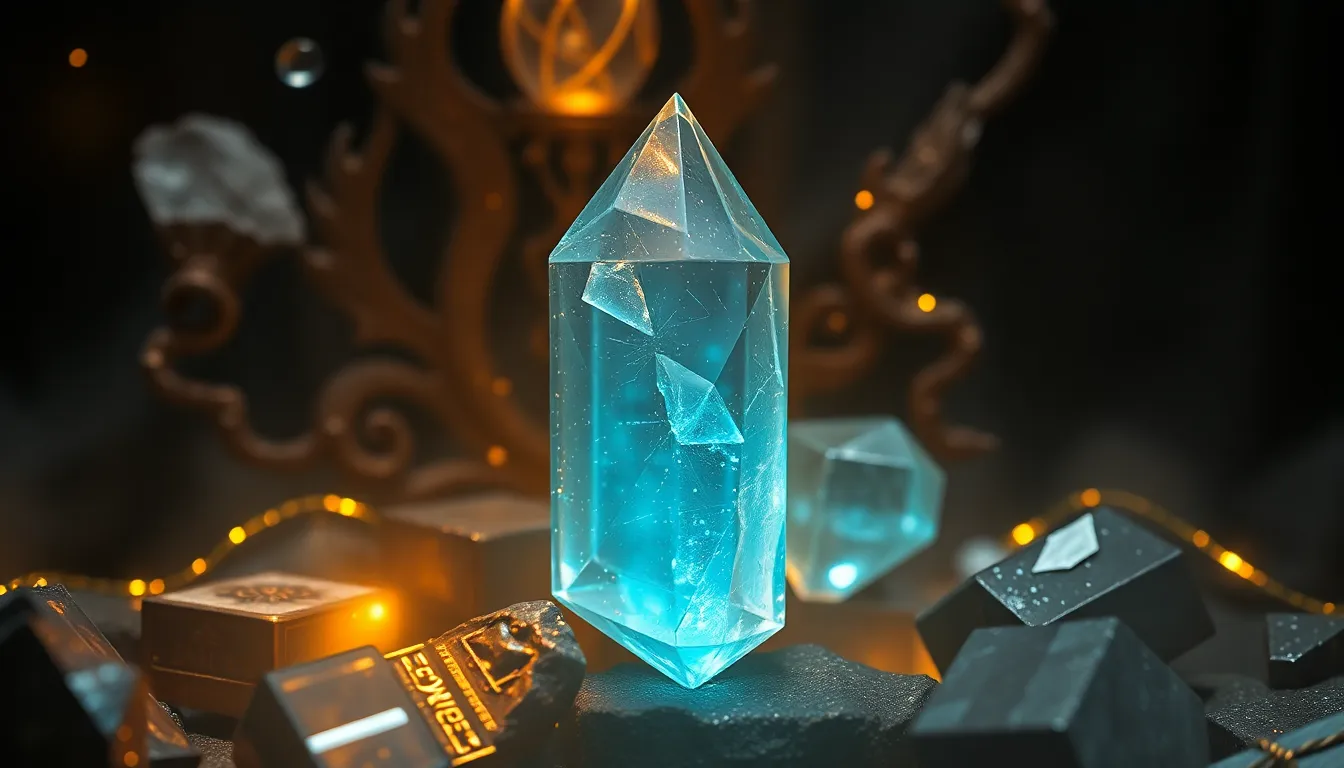The Cursed Crystal: 5 Magical Artifacts That Bring Misfortune
Introduction to Cursed Artifacts
Magical artifacts have fascinated humanity across cultures and eras, often attributed with extraordinary powers that blur the lines between reality and myth. These objects, whether they are ancient relics or contemporary creations, carry stories that captivate the imagination. A common thread among many of these artifacts is the presence of curses—malevolent forces believed to be linked to the objects, bringing misfortune to their holders.
Curses have been a part of human history for millennia, often serving as cautionary tales or moral lessons. They evoke fear and intrigue, leading to an enduring fascination with cursed items in popular culture, from movies to literature, where the allure of danger enhances the mystique of these artifacts.
The Legend of the Cursed Crystal
Among the many cursed artifacts, the Cursed Crystal stands out for its rich lore and the misfortunes it has allegedly brought upon its owners. Originating from a remote village, the crystal is said to have been created from the tears of a heartbroken sorceress who sought revenge against the world. This crystal, shimmering with an otherworldly glow, is steeped in legends of betrayal and sorrow.
Notable stories include accounts of its first owner, who was said to have lost everything after acquiring the crystal. Subsequent owners reported accidents, financial ruin, and even untimely deaths, leading many to believe in the crystal’s dark powers. The impact of the Cursed Crystal on its owners has created a chilling narrative that continues to be shared through generations.
Artifact #1: The Hope Diamond
The Hope Diamond, one of the most famous gemstones in the world, is known not only for its stunning blue hue but also for the misfortunes surrounding its past owners. Weighing approximately 45.52 carats, this diamond has a history that dates back to the 17th century, when it was originally stolen from an Indian temple.
Documented misfortunes include:
- The death of King Louis XVI and Marie Antoinette, who owned the diamond.
- The tragic fate of several subsequent owners, including a wealthy American socialite who lost her fortune.
- Countless accidents and sudden deaths among those who possessed it.
Theories about the Hope Diamond’s curse suggest that it may stem from its origins, as it was said to be a sacred stone with protective properties that turned malevolent after being mishandled. Today, the Hope Diamond resides in the Smithsonian Institution, where it continues to attract visitors fascinated by its beauty and its shadowy past.
Artifact #2: The Koh-i-Noor Diamond
The Koh-i-Noor Diamond, another renowned gemstone, has a rich history that intertwines with the British crown. This diamond, weighing 105.6 carats, is believed to have originated in India and has been claimed by various rulers throughout its storied past. Each owner of the Koh-i-Noor has faced misfortune, leading many to believe it is cursed.
Curses attributed to the diamond include:
- The downfall of multiple Indian dynasties that possessed the gem.
- The untimely deaths of several male heirs to the throne who sought to claim it.
- Political strife and conflict surrounding its ownership.
Today, the diamond is part of the British Crown Jewels, but debates continue over its rightful ownership, with many advocating for its return to India. The allure of the Koh-i-Noor lies not only in its beauty but also in the tragic fate of those who have coveted it.
Artifact #3: The Black Orlov Diamond
The Black Orlov Diamond, also known as the “Eye of Brahma,” is a gemstone with a dark and mysterious legacy. Weighing approximately 67.50 carats, this diamond is believed to have originated from India and was initially part of a religious idol before it was stolen. The diamond’s striking black color and historical significance add to its enigmatic nature.
Accounts of tragedy tied to its previous owners include:
- A Russian princess who reportedly committed suicide after acquiring the diamond.
- Various owners who faced severe financial or personal troubles.
- Rumors of the diamond being responsible for the ill fate of those who possess it.
Speculation and myths surrounding the Black Orlov’s curse suggest that it may be linked to its origins, with some believing that it carries the wrath of the deity it was originally associated with. Today, the diamond is housed in a museum, where it continues to capture the imagination of those intrigued by its dark history.
Artifact #4: The Mystic’s Mirror
The Mystic’s Mirror is a lesser-known artifact but is steeped in legends of magical powers and misfortune. Described as an ornate mirror that reflects not just physical appearances but also the inner fears and desires of those who gaze into it, the Mystic’s Mirror has been at the center of many tragic tales.
Anecdotes and stories linked to the Mystic’s Mirror include:
- Individuals who became obsessed with their reflections, leading to madness.
- Families who reported a series of unfortunate events after using the mirror.
- Warnings from various cultures about the dangers of seeking knowledge from the mirror.
Culturally, the Mystic’s Mirror serves as a symbol of introspection and the dangers of delving too deeply into one’s psyche. It reminds us that some knowledge may come with a price, and the warnings surrounding its use continue to echo in folklore.
Artifact #5: The Cursed Music Box
The Cursed Music Box is a haunting artifact known for its enchanting melody that can mesmerize listeners. However, the music box has a dark history, with many claiming it brings about strange occurrences and tragedies to its owners.
History and strange occurrences associated with the music box include:
- Reports of eerie sounds and ghostly apparitions when the box is played.
- Previous owners experiencing financial ruin or emotional distress after possessing the box.
- Children who were said to be drawn to the music box mysteriously disappearing.
The psychology of the music box’s effect on listeners is profound. Many who hear its melody report feelings of nostalgia and sorrow, leading to an emotional connection that can be both enchanting and unsettling.
The Psychology of Belief in Curses
The belief in cursed artifacts often shapes behavior and perception. Individuals who possess or come into contact with these items may begin to attribute misfortunes to the curse rather than coincidence, creating a self-fulfilling prophecy. This phenomenon is intensified by cultural superstitions and societal beliefs that reinforce the idea of curses.
Superstition plays a significant role in everyday life, influencing decisions and perceptions in ways that are often subconscious. Psychological explanations for the misfortunes associated with cursed objects suggest that belief itself can manifest real-world consequences, as fear and anxiety can lead to heightened sensitivity to negative events.
Modern-Day Implications of Cursed Artifacts
Today, the fascination with cursed items persists, with collectors seeking out artifacts steeped in history and legend. The market for cursed artifacts has grown, with prices often skyrocketing due to their mysterious reputations.
Ethical considerations surround the ownership of such items, particularly when they are tied to tragic histories. Questions arise regarding the responsibilities of collectors and the potential impact on the items’ legacies.
Conclusion: The Dual Nature of Magical Artifacts
The allure of cursed artifacts lies in their dual nature—objects of beauty intertwined with stories of despair and misfortune. They evoke a balance between fascination and fear, serving as reminders of the unknown forces that can shape our lives.
Ultimately, the stories surrounding cursed artifacts enrich our understanding of curses and magic, urging us to reflect on the power of belief and the narratives we create around the objects we cherish. The tales of these artifacts continue to intrigue and caution, leaving an indelible mark on our collective consciousness.



